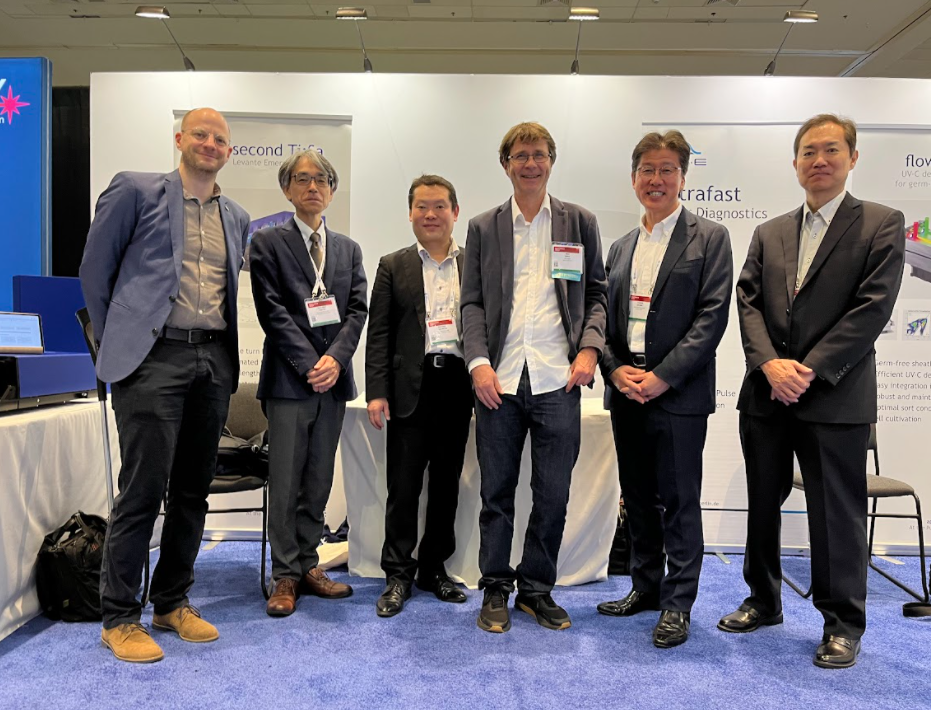Interview with Takeshi Ohyama, Managing Director of Phototechnica
Can you tell us the history of Phototechnica in two or three sentences?
Phototechnica was founded in August 1986, and we are celebrating its 38th anniversary this year. Our company initially started by importing laser oscillators, optical components, and parts from overseas. We have grown and expanded by importing and selling globally innovative and pioneering electronic optical devices while providing professional services to end users in Japan.
How and when did the collaboration between our companies begin? Can you remember what is the first APE device that Phototechnica sold to Japan? Who is the end user?
In 2006, Phototechnica became the exclusive distributor of APE products in Japan. However, some members of Phototechnica have maintained their relationship with APE since around 1997. Over a period of 27 years, Phototechnica has consistently introduced APE products into the Japanese market. The first APE product sold in Japan was the “Mini” autocorrelator, which was supplied to the National Research Institute.
What made you decide to promote APE products? How have APE products been received in your market? Any significant achievements or feedback?
APE’s autocorrelator is an exceptionally appealing ultrashort pulsed laser diagnostic device worldwide. In Japan, we are actively engaged in offline exhibitions, online webinars, magazine advertisements, and webpage promotion to introduce the product to research laboratories and many industrial applications. As a measurement tool for ultrashort pulsed lasers, APE’s autocorrelator- pulseCheck has been well received in the Japanese market and has received high praise from numerous end users in the field of ultrashort pulsed lasers.
Is there any recent customer feedback regarding to APE products?
In October 2021, we sold an APE Levante-IR-fs (a tunable fs OPO) and a difference frequency generator (DFG) for broadband mid-IR generation to Professor Kumagai at the Institute for Molecular Science (IMS), Japan. His research interest is in s-SNOM and nano-FTIR to characterize vibrational bonds in the nanoscale.
Recently we received news from Professor Kumagai that his research group has published two papers in Journal of Physical Chemistry C (2023) and in ACS nano Letters (2024). In these studies they used mid-infrared Scanning Near-Field Optical Microscopy (s-SNOM) to illustrate the metastability in the insulator–metal transition of individual vanadium dioxide nanoparticles and nano-FTIR spectroscopy and microscopy on vibrational bonds of single molecules. This achievement not only advances our understanding of the properties of nanomaterials but also showcases the performance of the APE Levante-IR-fs in cutting-edge scientific research. Dr. Nishida, his co-author, stated, that only the exceptional low noise characteristics of APE’s MIR light source made these measurements possible.
Here are the two publications:
https://pubs.acs.org/doi/10.1021/acs.nanolett.3c03479
https://pubs.acs.org/doi/10.1021/acs.jpcc.3c02151
Learn more about MIR-generation with APE’s Levante IR fs and DFG:
https://www.ape-berlin.de/en/mid-irbroadlightsource/
What are your expectations or prospects for our future collaboration?
In recent years, research and development in the field of life sciences, especially in near-infrared imaging, has flourished. These developments require the use of extremely stable light sources such as Levante. Therefore, we would like to actively promote APE’s products in this field to domestic users in Japan.

Finally, we extend our sincere gratitude to Ohyama-san for participating in our interview. We also appreciate Phototechnica for the many years of bridging the gap between the APE brand, its products, services, and end users in Japan. Happy 38th anniversary to Phototechnica!



